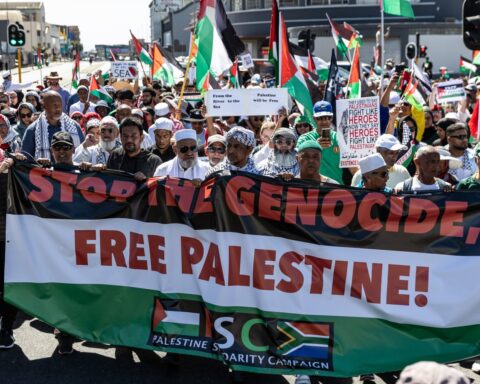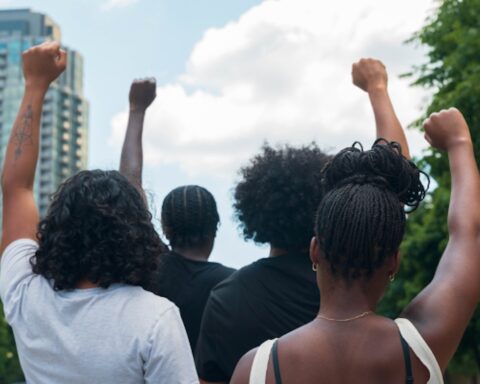Since last year, there have been widespread reports of arrests, abductions and torture in Uganda. Hundreds of people have claimed to have been seized by security forces, while hundreds more may still be unaccounted for.
It is difficult, however, to get a clear picture of what is happening. The government has repeatedly denied claims or hidden the truth. Meanwhile, opposition supporters’ claims are not always verified, especially those shared in the maelstrom of social media.
To get a more accurate picture, we interviewed dozens of former abductees, the families of missing people and state authorities, all kept anonymous for their own protection. Here is a brief guide of what we know and what we don’t.
The army is involved
The context for the recent abductions were the 14 January elections, which pit President Yoweri Museveni against popstar-politician Robert Kyagulanyi (aka Bobi Wine). The opposition leader warned that the people would “rise up” as they did in Libya, Egypt and Sudan if Museveni did not leave peacefully. The 76-year-old president, in power since 1986, accused the singer of wanting to “organise an insurrection”.
On the campaign trail in November 2020, Wine was detained for two days for allegedly violating COVID-19 restrictions. His arrest sparked protests, especially in the capital Kampala, and the state shot at least 54 people dead. Abductions intensified after this episode, continuing through polling day, which was marred by widespread allegations of fraud, and to Museveni’s inauguration in May.
In February, the president dismissed reports of disappearances but acknowledged that he had called in the army to defeat “lawbreakers”, “traitors” and “terrorists”. He named two military agencies by name: the Chieftaincy of Military Intelligence (CMI), the army’s intelligence wing; and the Special Forces Command (SFC), an elite president guard with experience fighting in Somalia, which is led by his son Muhoozi Kainerugaba.
Over a thousand people have been detained
It is difficult to verify numbers of people detained and reports by different people vary significantly.
In Museveni’s February speech, he said that CMI had arrested 242 people and that SFC had detained 76, listing a handful of suspects by name. On 15 April, Minister of Internal Affairs Jeje Odongo told parliament that 1,304 people had been arrested. He named 338 specific individuals, very few of which overlapped with Museveni’s list. The contradictions between official statements suggest that several security agencies are involved and there is little co-ordination between them.
Another source of numbers is Wine’s opposition party. The National Unity Platform (NUP) says 758 people have been abducted but admits that it is difficult to maintain an accurate and up-to-date list. Not all disappearances and releases are reported to the party. Only 58 people on the NUP’s list also appear on Odongo’s. The minister has suggested that any people unaccounted for are simply “hiding in villages” but offered no evidence for this claim.
Most abductions are in the central region
The NUP’s list gives the place of residence of 414 abductees. Of these, 378 are from the central region, mostly Kampala. This is where Bobi Wine’s party is strongest and where the government most fears unrest.
However, abductions have also occurred elsewhere, where they may be underreported. The NUP list includes 5 people from the west, 19 from the east and 12 from the north. In the Acholi sub-region in northern Uganda, a social worker told African Arguments how 7 NUP supporters were called from the villages to a meeting with the army in Gulu where they were detained and taken to CMI headquarters in Kampala. The group has since been released but all were too frightened to talk to us. “They really have horrible experiences,” says the social worker, who has met them. “They don’t seem very normal…Probably it’s the trauma.”
Some arrests appear targeted
Many of the arrests have targeted known NUP activists such as organisers at city markets, local council candidates or Wine’s family members. Some were rounded up at political rallies. In one prominent example, the army arrested 126 NUP supporters and leaders who were campaigning in the island district of Kalangala. 36 of those remain in detention, including Wine’s right-hand man Ali Bukeni (aka Nubian Li) and his bodyguard Edward Sebufu (aka Eddie Mutwe). Several journalists were arrested alongside them – including one of the authors of this article – and three remain behind bars.
In Kampala, security agencies used newly-installed CCTV cameras as well as informants to identify individuals who participated in the November riots. There are also allegations that powerful individuals within the ruling party have used their influence to engineer abductions of opponents.
But many are random
Other arrests appear more random. For instance, Shafiq Wangolo, a taxi driver, was at a mobile money stall in northern Kampala on 3 December when a group of men in yellow Museveni t-shirts started putting up campaign posters. When some other young men objected and an argument broke out, security forces bundled them, along with Wangolo, into a vehicle and drove away. Five days later on the opposite side of town, Denis Matovu and Richard Sonko were abducted in a near-identical incident. Like most young men in Kampala, these three men are reportedly sympathetic to Bobi Wine but their families insist that they were not activists.
Many are taken to prisons or barracks
Many of those abducted eventually end up in a new prison at Kitalya, which opened last year. Others spend most of their time in military custody such as the barracks at Makindye or CMI headquarters in Mbuya, Kampala.
Col. Deo Akiiki, the deputy army spokesman, says people are “never” detained at CMI headquarters, but multiple abductees claimed to have been held there in a windowless room with about 50 other people. Multiple people spoke of being abused there too. The following description was typical: “There’s a place they call a veranda. We call it a freezer. It’s too cold. They pour water on you, they make you roll several times in that water, or they strike you. You roll several times, you jump, while you say ‘I will never support People Power, I will never go to streets.’ You are masked, you are jumping, they are beating you. They have sticks.”
Those held at CMI headquarters are charged in an army court before being released. They are usually accused of “unlawful possession of military stores”, a reference to the red beret made popular by Bobi Wine.
Others are taken to unidentified houses
Some others are taken to unknown buildings. One man who was abducted with Wangolo describes being taken to “very clean” house with a marble-tiled floor and flush toilets. Another man, abducted by SFC in Mukono, says he was taken to a building that “was just like a house” and that they slept on “tiles” for 20 days before they were relocated to place that was “just a garage”. Both men say they were beaten, forced to do exercises, and hooded the entire time. They were both released at night, without charge, in a forest and sugar cane plantation respectively.
The lines between prisons, barracks and so-called “safe houses” are blurred. One man said he was moved to four different places during his three weeks in detention when he was beaten and abused. “They arrest people thinking that they are close to Bobi Wine and have information about his activities,” he said. “When they realise that you don’t have information, they release you. This is always after torturing you as a way of extracting information.”
Some former abductees bear signs of mistreatment such as scars and missing toenails. “They got a flat iron, a hot one, they started burning my thighs,” says one man with scars and peeling skin that a medical report attributes to burns. “They got a plastic jerrycan then they started dropping that liquid, a hot one [on my back].” Others report the use of electric shocks and mysterious injections, which are harder to verify. Wine has also shared graphic images on social media of one of his supporters, Fabian Luuka, who he claims died after being tortured in custody. We spoke to friends and family of Luuka who say the pictures are genuine but were unable to trace anyone who witnessed his abduction or detention.
Prolonged detention violates constitutional rights
Many arrests and abductions are illegal. The constitution requires that anyone detained must be informed of the alleged offence, given access to a lawyer and their next-of-kin, and be brought to court within 48 hours. But some people have now been missing for six months without seeing a lawyer or appearing before a court. Enforced disappearances are also illegal under international law.
One feature of the abductions has been the frequent use of military courts to try civilians. In 2006, the constitutional court ruled that this practice is unlawful. The army continues to argue that it can try civilians for certain crimes such as “possession of military stores”, which explains why many detainees describe having red berets planted on them. But this argument has a flimsy legal basis.
What we don’t know
We don’t know the organisational infrastructure behind the abductions or who knew what and when. We don’t know whether detentions were well-planned, or whether they ran out of control as competing security networks jostle for influence. We don’t know who objected or urged restraint. And beyond drops of gossip, we don’t know much about the dynamics at the top of Uganda’s military. In particular, we don’t know how the abductions have affected the rivalrous relationship between an ascendant SFC and the rest of the army. This matters because SFC commander Muhoozi is said to want to succeed his father to the presidency.
We also don’t know how many people have been killed. Several former abductees have told horrific stories of people with whom they were seized dying, but security agencies have never acknowledged such incidents.
The biggest unknown, however, is the most heart-wrenching one. Where are these missing people and when will they come back? – African Arguments





